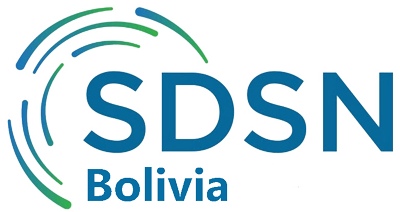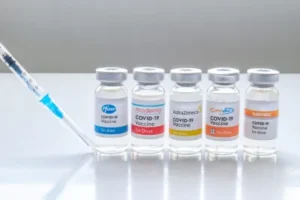June 29th, 2021
Many countries, including Bolivia, have extremely rigid COVID-19 vaccination protocols. These were developed based on the original trial data for each vaccine. The first vaccine you get is pretty much randomly assigned to you, based on which one is available at the time and location, when your age group is eligible to receive it. This seems to work pretty well. However, the second shot must be from the same provider, and you should get it within a short window of time, as determined by the protocol; which can be a logistical challenge both for people and health systems.
In Bolivia, for example, we just received a big shipment of Sinopharm vaccines, but people are clamoring for their Sputnik-V second dose, which for many is due now, according to the first shot vaccination certificate they received. At this time, Bolivia has a stock of more than 1 million COVID-19 vaccine doses, but it is a huge challenge to get them to the right people, at the right place, at the right time, according to the protocols.
Ahora si. Hace unos cuantos días llegaron medio millón de dosis de Sinopharm. Con este lote, a línea verde en la gráfica de abajo (total de dosis recibidas) se elevó bastante.
No me digan que no hay vacunas. ¡Vayan a vacunarse! La tercera ola se está calmando, evitemos la 4ta.💉 pic.twitter.com/v9sfFD1HhB — BoliGráfica (@BoliGrafica) June 26, 2021
It could potentially speed up the global vaccination roll-out if we allowed people to get their second shot from a different provider, which is why many clinical trials are currently underway testing the effects of mixing vaccines. Below we will provide a short overview of the evidence to date.
Scientific Evidence on Mixing and Matching COVID-19 Vaccines
The mix-and-match strategy, formally known as “heterologous prime and boost”, makes theoretical sense as it stimulates the immune system in different ways. The strategy has been widely used for the administration of HIV vaccines, and has been shown to increase the intensity and breadth of immune responses. Experiments in mice using different combinations of Chinese COVID-19 vaccine candidates indicated that heterologous sequences stimulated stronger antibody and T-cell responses than when applying the same type of vaccine twice. An adenovirus vectored vaccine followed by an mRNA vaccine provided a particularly strong antibody response in this trial (1).
The CombiVacS trial carried out in Spain was the first to test and publish results on this mixing strategy in humans. They found that the adenovirus vectored AstraZeneca vaccine followed by the Pfizer-BioNTech mRNA vaccine showed a very strong immune response with no alarming side effects (2). A small study in Germany also found this sequence to be safe and at least as potent as the homologous vaccination regiments (3).
The much larger ongoing randomized controlled Com-COV trial led by the Oxford Vaccine Group in the UK just came out with their first mixed schedule immunogenicity results this week. They found that the heterologous sequences (AZ-Pfizer and Pfizer-AZ), with a 28-day interval between prime and boost, produce far more antibodies than two AZ doses with the same interval, but not as many as two Pfizer doses (4). They are continuing to test the results of longer prime-boost intervals, and have also added other vaccines into the mix, including those more accessible for poorer countries, and more results will be coming out over the next few months.
It is worth pointing out that Sputnik-V was actually designed as a heterologous prime and boost vaccine, exactly because that makes theoretical sense. It uses two different recombinant adenovirus carriers (Ad-24 for the first shot and Ad-5 for the second one) in order to avoid that the primed immune system eliminates the carrier too quickly during the second shot, thus interfering with the immune response. This has shown to be a very effective strategy, and the use of two different vectors can also help overcome problems of pre-existing adenovirus immunity in the population (5).
Vaccine Mixing in Other Countries
Several European countries (e.g. Germany, France, Sweden, Norway, and Denmark), are already recommending that people who received the AstraZeneca vaccine for their first shot, should receive another vaccine for the second one. That is mainly due to the concern over rare side-effects of the AstraZeneca vaccine, but now it also appears that the mixing strategy produces a better immune response.
Given how important vaccine mixing could be in speeding up the global vaccine roll-out, I hope authorities are paying close attention to the results of these mixing trials, and will update protocols accordingly. If more experiments are needed, I will happily volunteer to mix my first AstraZeneca shot with any other available COVID-19 vaccine.
Referencias
[1] https://www.ncbi.nlm.nih.gov/pmc/articles/PMC8009122/ [2] https://www.isciii.es/Noticias/Noticias/Paginas/Noticias/Presentaci%c3%b3n-resultados-preliminares-CombivacS.aspx [3] https://www.medrxiv.org/content/10.1101/2021.05.30.21257971v1 [4] https://papers.ssrn.com/sol3/papers.cfm?abstract_id=3874014 [5] https://www.thelancet.com/journals/lancet/article/PIIS0140-6736(21)00191-4/fulltext * SDSN Bolivia. The viewpoints expressed in the blog are the responsibility of the authors and do not reflect the position of their institutions.
 Español
Español
